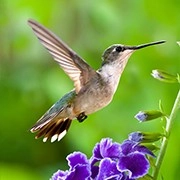Capturing Stunning Buildings

Lykkers, if you're intrigued by architecture and the art of photography, architectural photography is a great way to explore both.
Whether focusing on the grandeur of historical buildings or the simplicity of modern homes, this genre allows photographers to capture the essence of structure and design.
Getting Started with Exterior Architectural Photography
When photographing the exterior of a building, it's important to acknowledge that you have limited control over certain factors. Unlike studio settings where everything can be arranged to perfection, architectural photography is often about adapting to what you are given.
According to photographer Nick Ulivieri, "The challenge is knowing when to shoot and when not to, as external factors like the weather and lighting play a significant role."
For exterior shots, natural conditions such as time of day and weather are critical. There are two main types of outdoor shots to consider: daytime shots with clear skies or the "blue hour" shots taken just after sunset. The blue hour occurs when the sky takes on shades of pink, blue, and purple, providing an excellent opportunity to capture building facades illuminated by both natural and artificial lighting.
Timing and Lighting: Key to Great Shots
The right moment can significantly enhance the visual impact of a building. A well-timed photograph captures the ideal lighting and mood, whether in daylight or at dusk. Ulivieri emphasizes that "A great daytime photo could feature a bright blue sky with a few clouds, while a blue hour shot provides rich contrasts and intense colors."
To avoid harsh contrasts, the best time for shooting outdoor buildings is often during the "golden hour," which is roughly an hour after sunrise or just before sunset. This period offers soft, warm light that creates gentle shadows and highlights architectural details without the risk of strong contrasts found when the sun is at its peak.
However, the weather can also influence your shoot. "A building with sharp contrasts might look best when the sun is high in the sky," says Kenton Waltz. On the other hand, rainy days can create glossy reflections on metal and concrete, which can enhance industrial buildings, while Victorian-style houses may take on an eerie charm under overcast skies. Each weather condition can add unique visual elements to your photos, so it’s essential to choose the right time to showcase a building's best features.
Finding the Perfect Angle
The angle from which you shoot is as important as the lighting. Photographers should be mindful of the perspective they are working with. For tall buildings, such as skyscrapers, shooting from the street level might cause the lines to converge and distort the building's proportions. Waltz suggests, "Positioning yourself at about half the height of the building can give you a more accurate perspective."
For especially high structures, a ground-level shot may not provide the best angle. In such cases, a drone can be a valuable tool, offering a bird's-eye view of the building from various angles.
Interior Photography: Preparation is Key
Interior architectural photography requires a slightly different approach. One of the first steps is preparing the space for the shoot. Often, the interior of homes, offices, or other buildings isn't arranged to look its best for photos. Waltz points out, "The most challenging part of interior photography is often moving the furniture around to ensure the space looks its best."
Photographers should also make sure to clear away any visible clutter or personal items. "No matter how expensive a house is, there’s always toothpaste on the mirror," he adds. Cleaning up the space is essential for creating a professional-looking shot.
When shooting interiors, Ulivieri recommends positioning the camera at a lower height, about two to three feet off the ground. This perspective helps capture the space in a more natural way, highlighting the furniture and overall layout of the room. Higher angles often shift focus to walls and doors, rather than showcasing the details of the space.
Weather and Lighting in Interior Photography
The lighting conditions in an interior space can vary significantly, especially on cloudy or rainy days. In such cases, photographers need to make the most of available natural light or supplement it with artificial lighting. Ulivieri explains, "Even if the space doesn’t have the best lighting, you can still work on composition to make the most of it."
Using advanced equipment such as external flashes can help compensate for insufficient natural light, but it is always best to work with what you have and adjust the composition accordingly.
Essential Equipment for Architectural Photography
While you don’t need a lot of gear to start with architectural photography, certain tools can enhance your results. A tripod is essential for both interior and exterior shots, as it allows you to take multiple photos from the same angle and later combine them in post-processing.
For interior shots, a wide-angle lens is invaluable. It ensures the room appears as spacious as it truly is, capturing the full essence of the environment. For exterior shots, tilt-shift lenses help maintain straight lines and avoid perspective distortion, particularly when photographing tall buildings from a distance.
Sometimes, drones can also be useful for shooting hard-to-reach areas or for capturing unique angles of a building.
Patience: The Photographer’s Most Important Trait
Regardless of the tools at your disposal, the most crucial element in architectural photography is patience. Waltz advises, "You can’t rush the process. It might take an entire day, and you may only walk away with ten photos." Architectural photography is about working with the environment, weather, and building to create images that showcase its unique beauty.

Conclusion
Architectural photography is a rewarding field that combines technical skill with artistic vision. With patience and practice, anyone can master the art of architectural photography and capture stunning images that tell the story of a building's design and its place within the surrounding environment.
Feedback
0/1000

 · Art Team
· Art Team